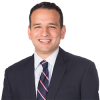Information contained in this publication is intended for informational purposes only and does not constitute legal advice or opinion, nor is it a substitute for the professional judgment of an attorney.
On December 22, 2021, the New York Department of Labor (Department) issued final regulations regarding the New York State Sick Leave Law (NYSSLL), which has been in effect since September 30, 2020. The final regulations do not contain any changes to the rules initially proposed on December 9, 2020. The proposed regulations, along with the Department’s guidance, had not addressed many important questions affecting businesses. In response to comments from the public about the proposed regulations, the Department clarified some critical issues, but it also left many questions unaddressed—and in some instances, the Department’s response muddies the water rather than clarifies the issues it addresses.
In determining how much sick leave to provide, do employers utilize the number of employees working in New York, or the number of employees working nationwide?
In responding to public comments, the Department stated that employee headcount is based on the number of employees working nationwide. However, the text of the NYSSLL and Department regulations are inexplicably silent on this issue. Thus, employers should utilize the highest total number of employees employed nationwide at any point during the calendar year and include in this count those individuals who are part-time employees, jointly employed, and employees on paid or unpaid leave (including leaves of absence, disciplinary suspension, other temporary absences) who are reasonably expected to return to active employment. The Department added that it may provide further guidance as necessary.
If employers frontload sick leave each calendar year, must they carry over any unused sick leave to the following calendar year?
Under the NYSSLL, accrued but unused sick leave must be carried over to the following year. However, both the law and Department regulations are silent as to whether the carryover requirements apply when employers “frontload” at the beginning of each calendar year the total amount of paid sick leave an employee is entitled to use. In its response to comments, the Department clarified that employers cannot cap the number of accrued but unused sick leave hours that employees can carry over from one calendar year into the next, even when an employer frontloads sick leave. The Department’s approach departs from the majority of other state and local sick leave laws and regulations, which relieve an employer of carryover obligations when an employer has a frontloading rather than accrual-based system. Laws with this type of frontloading are in place in New York City, Arizona, California, Maryland, Massachusetts, Michigan, Oregon, Rhode Island, and Vermont.
In another response, the Department departed from New York City’s paid sick leave law by permitting employers to give employees the option of receiving payment for unused leave at the end of the calendar year instead of carrying over the unused hours. New York City’s paid sick leave law does not permit employers to offer employees the option of cashing out their accrued, unused hours if the employer uses an accrual-based system; if, however, employers are transitioning from an accrual-based to frontloading system in the next year, the city would condone such a cash-out.1 New York City also allows unused frontloaded leave to be cashed out, but only if the employer frontloads the requisite amount of paid sick leave at the beginning of the next year.
Must employers allow fractional accrual of sick leave?
The final regulations do not resolve the conflict the Department created when it proposed regulations that differ from its guidance on the issue of whether paid sick leave accrues on a fractional or a whole-hour basis.
Under the NYSSLL, employees accrue one hour of paid sick leave for every 30 hours worked, but it remains unclear whether an employee accrues a fraction of a leave hour for each fraction of 30 hours an employee works or one leave hour only after working 30 hours. For example, if an employee works 10 hours per week, the employee accrues approximately 0.333 hours each week for three weeks under a fractional system, whereas the employee accrues one sick leave hour only after working 30 hours in three weeks under a whole-hour system.
In its December 2020 FAQs, the Department (like some other enforcement agencies) suggests that leave accrues on a whole-hour basis with its statement that “an employee would have to work at least 30 hours before accruing any leave.” However, the Department’s final regulations state that accrual must account for all time worked regardless of whether time worked is less than a 30-hour increment and, in calculating accrual, “employers may round accrued leave to the nearest 5 minutes, or to the nearest one-tenth or quarter of an hour.”2 In addressing a commentor’s concern over accounting for sick leave accruals in increments below 30 hours, the Department stated that the rule allows employers to round time. Given the Department’s reference to rounding numbers in both the final regulations and responses to comments on the proposed regulations, it appears the Department takes the position that sick leave is accrued on a fractional basis despite its answer in the FAQs.
Did the Department address an employee’s use of sick leave and how much advance notice an employer may require?
Yes. The Department rejected comments that it perceived to limit employees’ rights to take paid sick leave. For example, consistent with its position in the FAQs rejecting a length-of-service requirement before newer employees may use sick leave, the Department declared that employees must be permitted to use sick leave as soon as it is available upon accrual.
The Department, in its response to comments, also rejected suggestions that employers be permitted to require employees to use paid sick leave (in lieu of unpaid absence) when they are taking time off for a NYSSLL-covered reason.
Although last-minute changes in schedules can create difficulties for employers and an employee’s colleagues, the Department also objected to recommendations requiring employees to provide advance notice of sick leave usage for foreseeable events (such as when an employee schedules a doctor’s appointment several days or weeks in advance of the appointment). The Department rejected an advance notice requirement on the grounds that it would be “difficult” to create different categories of foreseeability.
May an employer request documentation to verify an employee is using paid sick leave for a permissible reason?
The NYSSLL prohibits employers from conditioning an employee’s use of sick leave on the disclosure of confidential information relating to the medical condition (or covered safe leave reason) underlying the employee’s absence from work. The law, however, is otherwise silent as to the definition of “confidential information,” whether and under what circumstances an employer may request documentation to verify that an employee is using paid sick leave for a reason permitted under the law, and the scope of permissible information employers may request from employees.
In its regulations, the Department defined “confidential information” as “individually identifiable health or mental health information, including but not limited to, diagnosis and treatment records” (or other information that is treated as confidential or prohibited from disclosure by law). The Department also explained that employers may not require employees to disclose “the nature of an illness, its prognosis, treatment, or other related information” pertaining to an employee’s use of sick leave.
The Department’s regulations also clarified that employers may request documentation from employees to verify their eligibility to use sick leave under the NYSSLL, but only when an employee uses leave for three or more consecutive workdays. However, employers may not require employees to pay any costs or fees associated with obtaining verification of the employee’s eligibility to use sick leave. As the Department explained in its responses to comments, this means that employers cannot deny sick leave when employees are unable to obtain documentation because they cannot afford to do so. The Department also explained that employers cannot deny an employee the right to use of sick leave while attempting to confirm the basis for the leave.
If an employee uses sick leave for three or more consecutive workdays, employers may request only the following documentation: (1) an attestation from a medical provider “supporting the existence of a need for sick leave,” the amount of leave needed, and the date the employee is expected to return to work; or (2) an attestation from the employee concerning their eligibility to use the sick leave. Under either option, employers cannot require the employee or medical provider to disclose the reason for the sick leave usage. The Department will publish a template for employee attestations.
Did the Department address whether employers should utilize the employee’s regular rate of pay or the amount the employee would have earned had the employee worked when paying paid sick leave?
The NYSSLL requires employers to pay for time spent using paid sick leave at an employee’s “regular rate of pay,” or the applicable minimum wage, whichever is greater. In its response to requests that the Department clarify the method for determining the regular rate of pay, the Department referred commenters to the New York Law Labor, existing Department regulations and guidance, and case law. In other words, as a general matter, employers will be expected to pay the “regular” rate of pay, which is the rate used to calculate overtime premiums owed, not the employee’s base pay rate, and not the amount the employee would have earned had the employee worked.
Do other questions remain unanswered?
A number of unanswered questions about the law remain, and we expect the Department to issue additional regulations or guidance. For example, it is not clear whether the NYSSLL permits employers to cap the total amount of sick leave an employee can accrue. The law and the Department also do not address whether, and if so, how the statute applies to people who have non-traditional work arrangements, for example, individuals who telecommute or perform work in New York only on an occasional, irregular basis.
Employers should regularly check the Department’s website for updates and confer with counsel to ensure compliance.
See Footnotes
1 New York City Department of Consumer and Worker Protection, Frequently Asked Questions (rev. Nov. 2, 2020), available at https://www1.nyc.gov/assets/dca/downloads/pdf/about/PaidSickLeave-FAQs.pdf.
2 N.Y. Comp. Codes R. & Regs. tit. 12, § 196-1.5(a)-(b).





